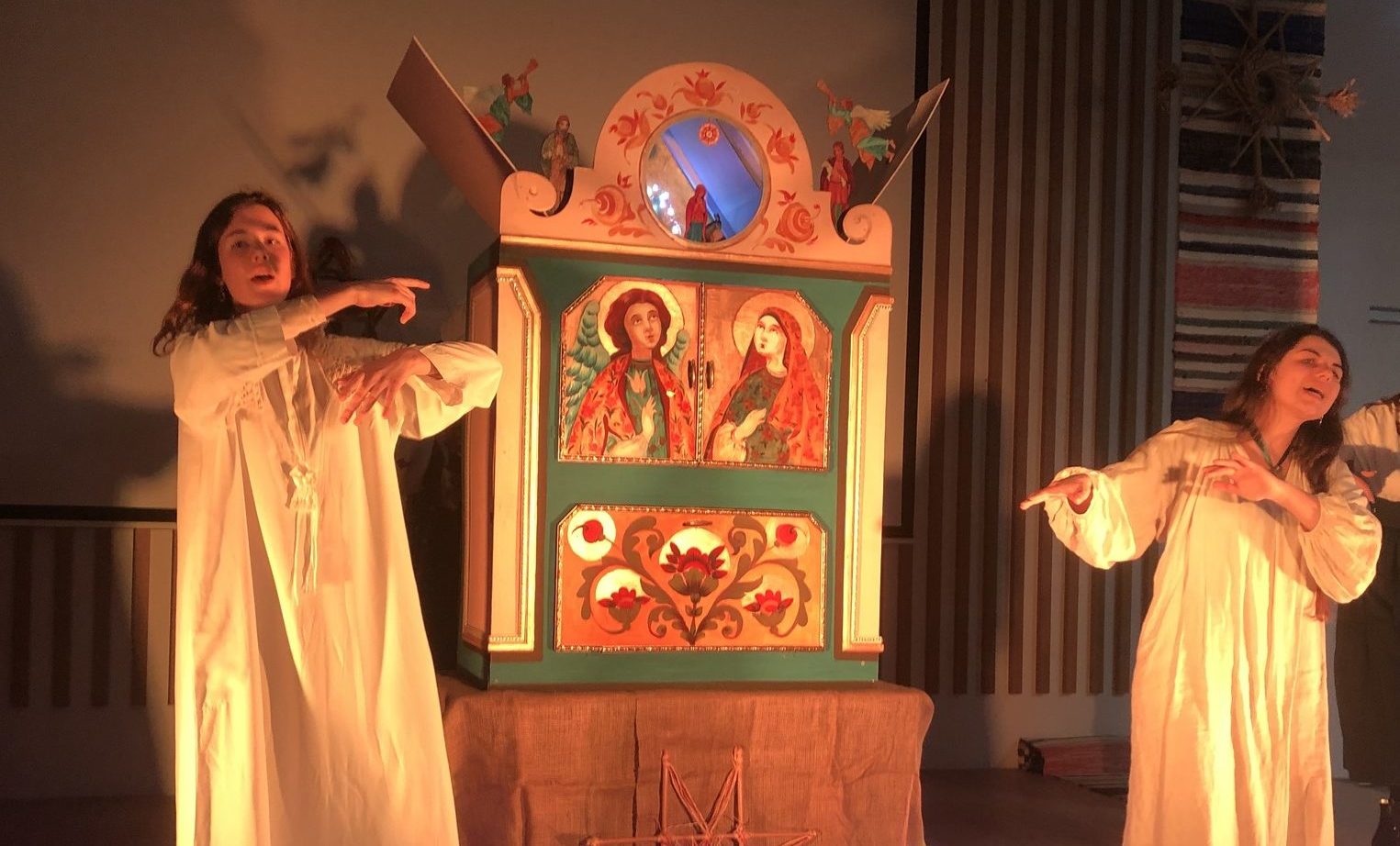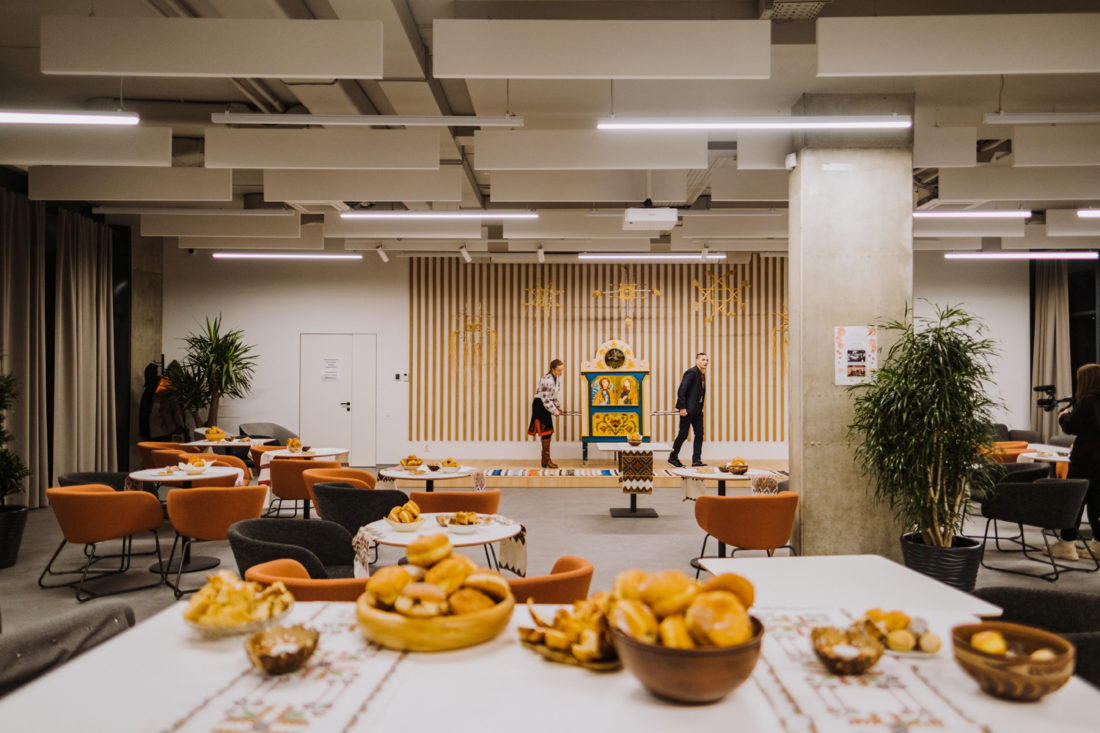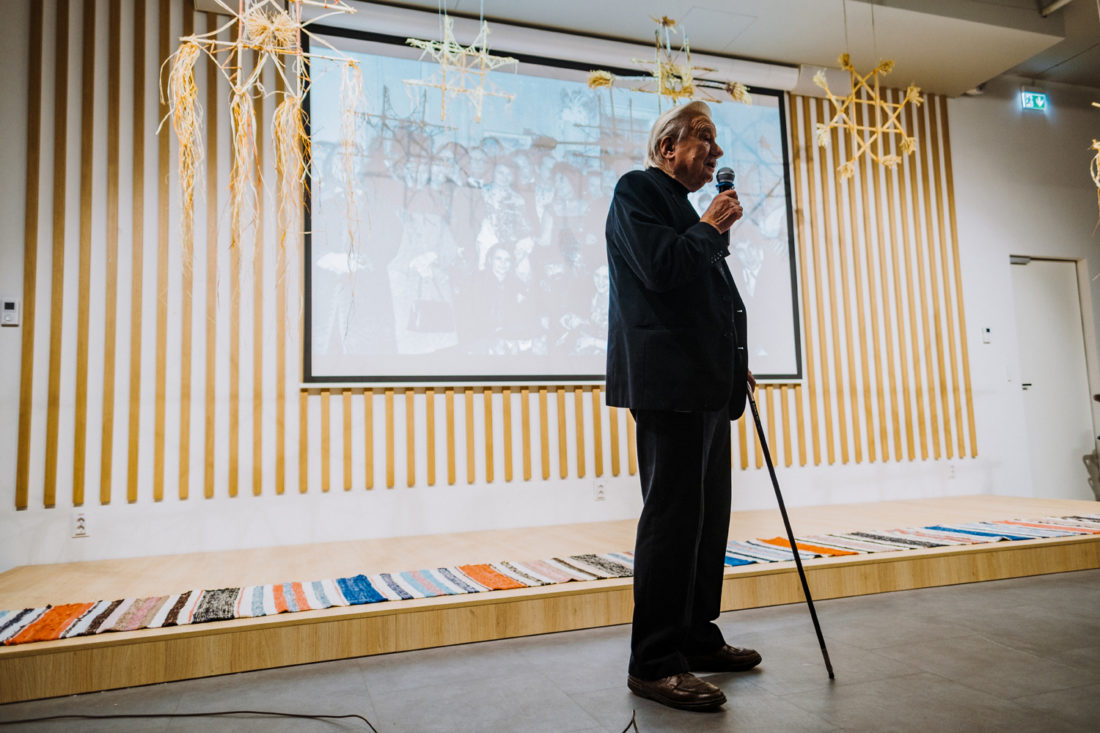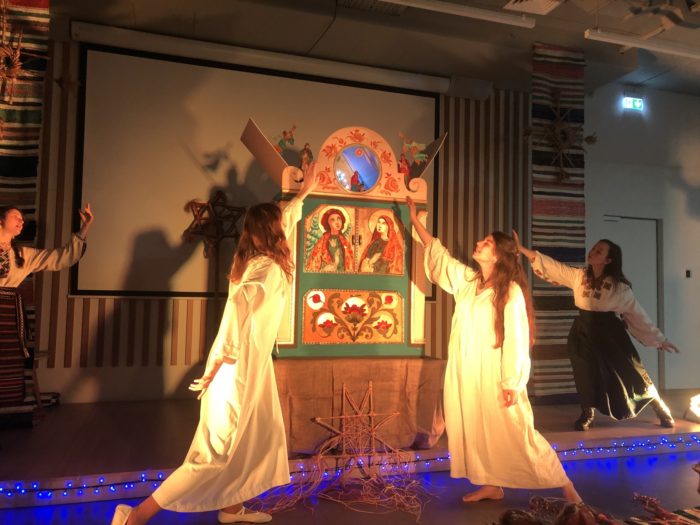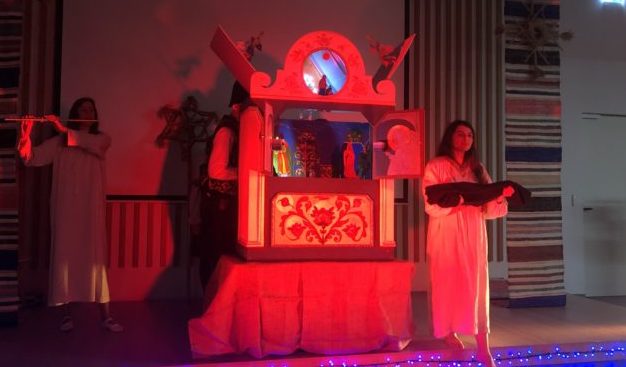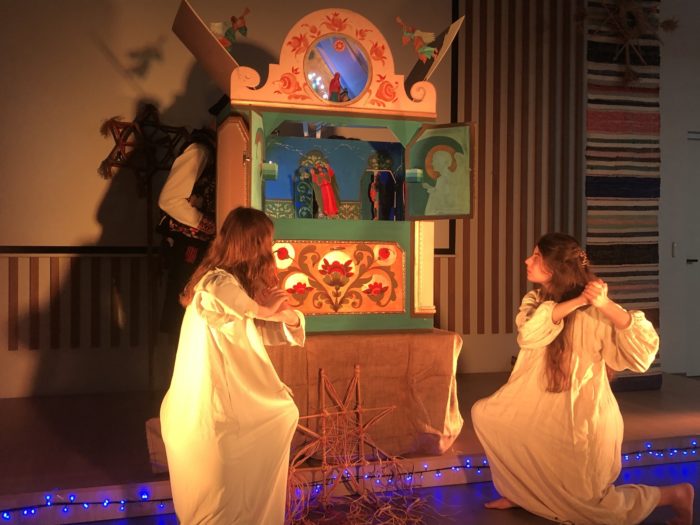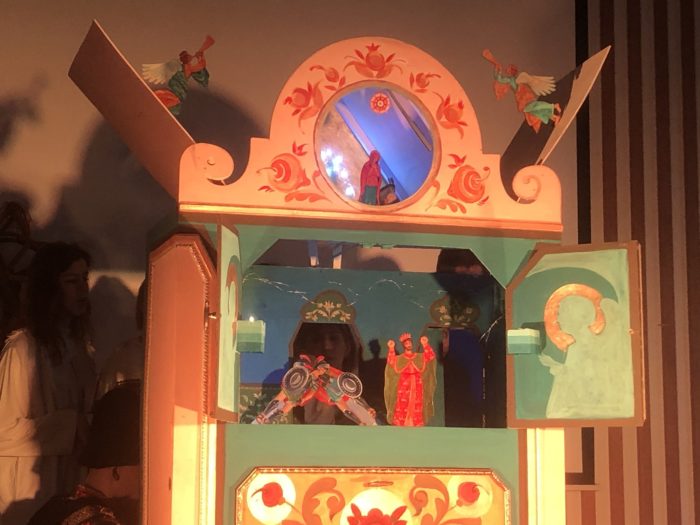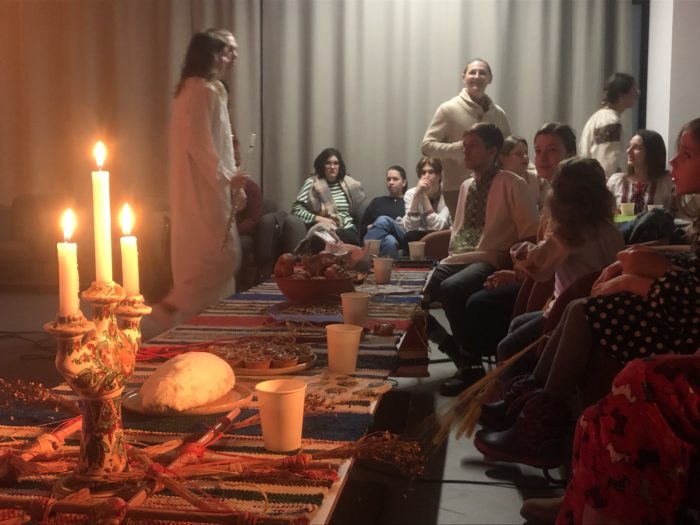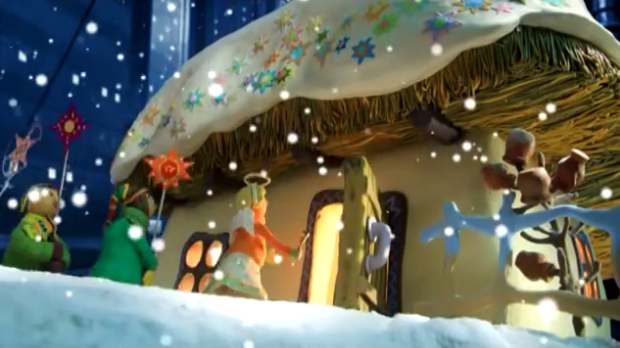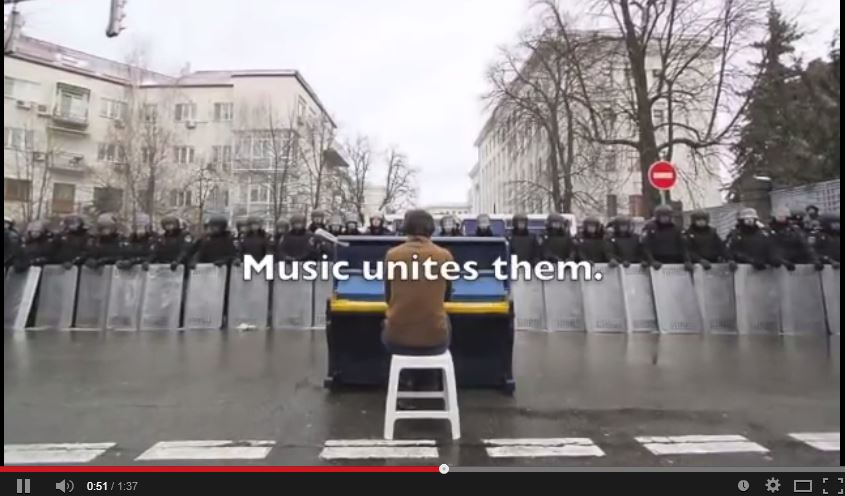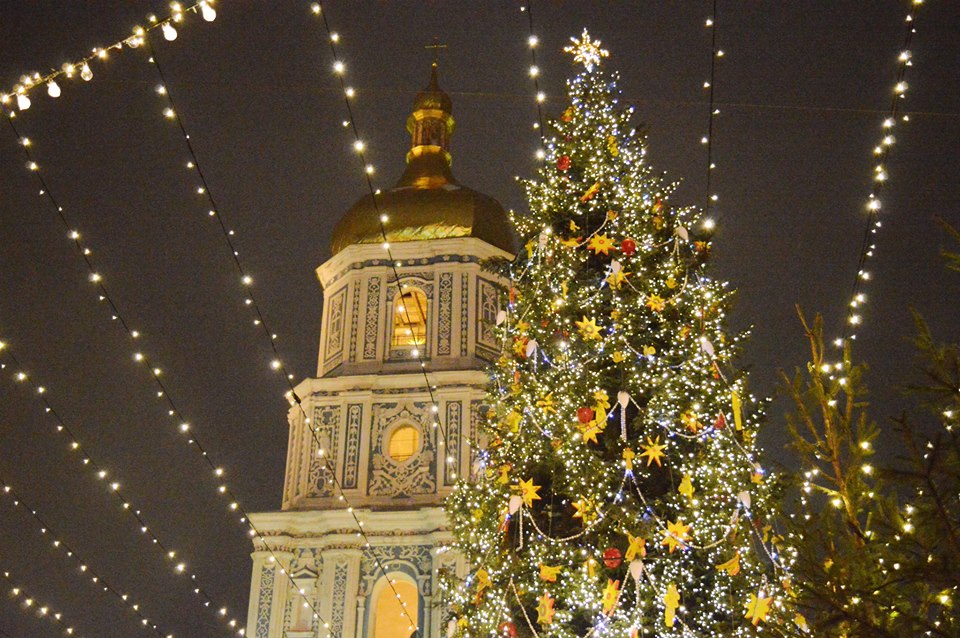Ukraine's oldest surviving vertep, a "neo-baroque mystery" around the nativity story where intricately carved figures symbolize the minuscule scale of human life in comparison to the vast universe has been reconstructed by students in Lviv.
Vertep: a Ukrainian Christmas tradition that survived despite Soviet bans
Vertep is the Ukrainian Christmas tradition of the nativity story and other mystery plays presented through portable puppet theater and drama.
Various scenes symbolize the victory of good over evil. The word vertep refers to a “secret place” of the birthplace of Christ. The vertep has been performed in Ukraine since the late 16th century and – despite the ban under the USSR of all religious elements — has survived and remains a central Ukrainian Christmas tradition today.
In late 2021, shortly before the February 2022 Russian invasion, the oldest known Ukrainian Sokyrynskyi vertep was retrieved from The Museum of Theater archives and reconstructed for the first time since baroque times. The student theater of the Ukrainian Catholic University (UCU) in Lviv was among the first to perform this historical vertep.
While Ukrainian soldiers perish to defend Ukrainian independence on the frontline, artists in unoccupied territories become ever more determined to retain, reconstruct, and perform Ukrainian art forms that Russia tries to destroy on the lands it has occupied. Students of UCU are not standing aside. Their belief is to energize the people’s wrath against the enemy into actively preserving Ukrainian culture and traditions, and thus achieve a triumph in itself.
Russian occupiers launch war on Ukrainian history, burning books and destroying archives
The Sokyrynskyi vertep which was reconstructed is most celebrated for surviving the centuries, and with notes intact. In the distant past of the 1770s, Kyiv students who had performed the vertep gifted it to the Ukrainian Halahan family of nobles who lived in what is now the Chernihiv Oblast. The Museum of Theater, Music, and Film Arts of Ukraine in Kyiv holds these baroque manuscripts as well as the original two-story wooden structure and the wood-carved figures used in performances.
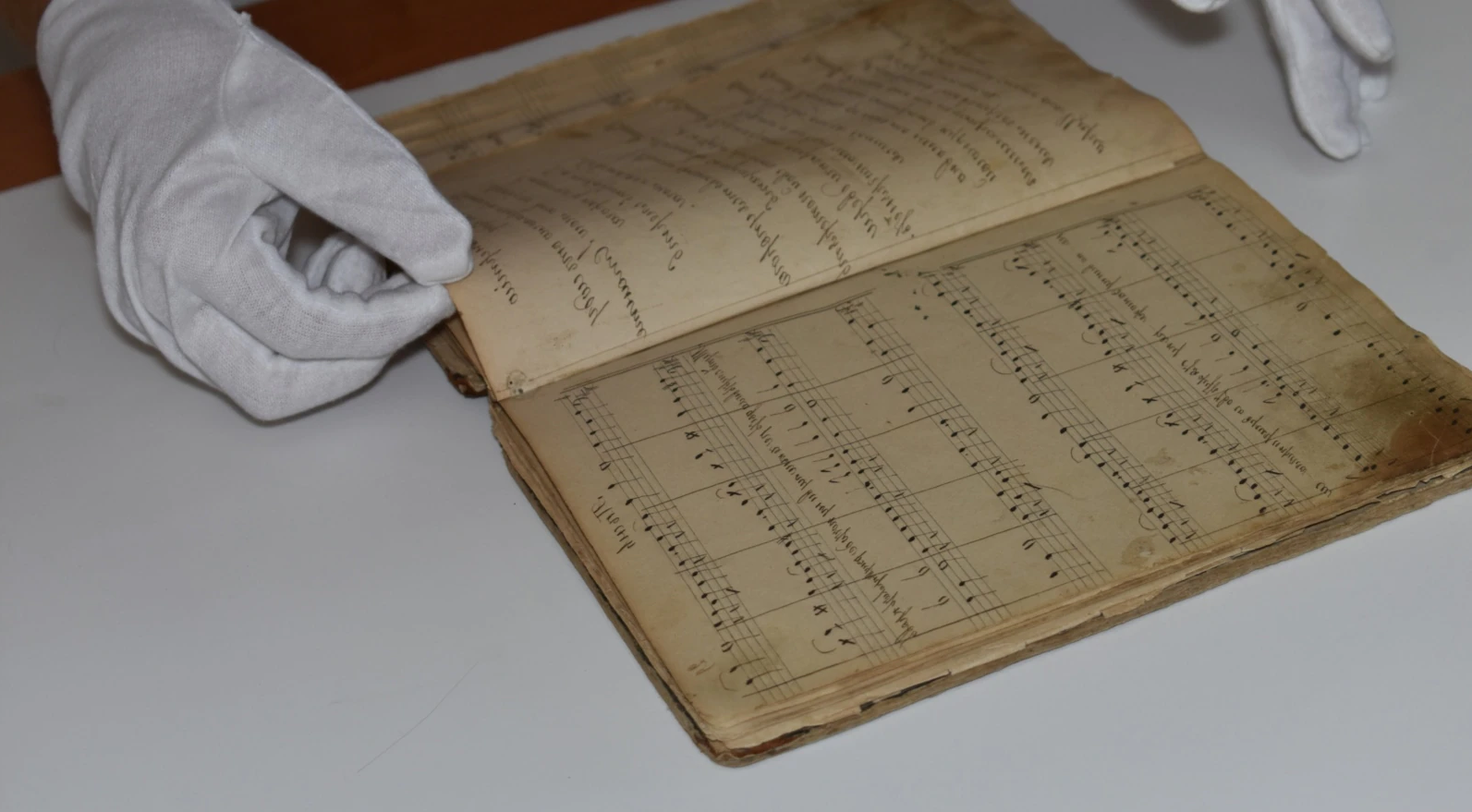
In 2021, these manuscripts were acquired for the research project titled, “Vertep. A neo-baroque mystery.” Supported by the Ukrainian Cultural Foundation, the research team was the first to recreate the vertep, in October 2021 – unfortunately, without the original wooden structure.
The vertep includes one of the best examples of Ukrainian baroque music, and the team was careful to digitize the compositions.
Students of the UCU immediately acquired it for performance, adhering to the baroque rules of the genre, including the puppet theater.
The UCU was founded in Lviv in 2002 as a continuation of a theologian academy banned in the USSR. The University quickly evolved into one of the top Ukrainian universities, offering a wide range of professional faculties and programs. In 2021, the university was second in Ukraine, as measured by the average academic entrance scores. Including students from all over Ukraine, a wide variety of extra-curricular activities is the distinct feature of the UCU. A leading example is the university theater, led by Director Yevhen Khudzyk. The theater is continually reviving cultural traditions, from different Ukrainian regions, that were banned by the USSR.
How a university in Lviv has revolutionized higher education in Ukraine
Theater artist Bohdan Polishchuk helped students construct a new small wooden house, which can be carried by two people who assemble the characters. The layout follows that of the original models.
The new vertep house has three floors, representing heaven, earth, and hell. Depending on the scene and characters, the vertepnyky (puppeteers) standing behind the mini-house, and sometimes actors in front of the structure, can open or close the doors and gates, showing only one, two, or all three spheres at the same time.
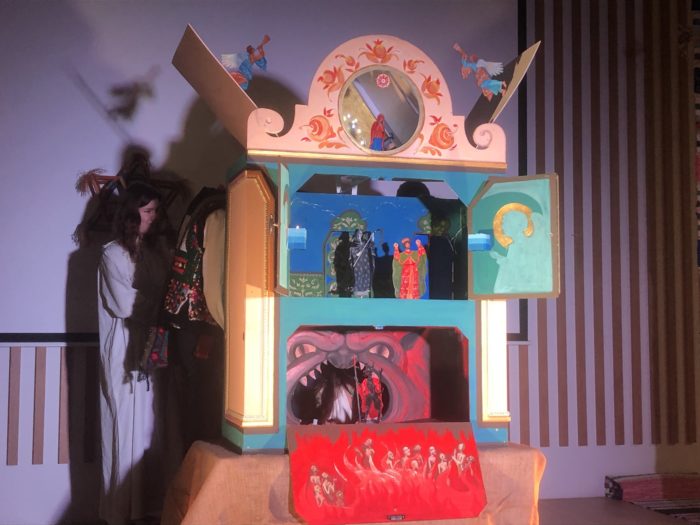
A vertep included various characters — sometimes as many as 40 — symbolizing good and evil. Actors sang, recited, and commented on events unfolding around them. The three wise kings and humble shepherds, as well as various animals, were also represented.
The vertep structure is meant to show the minuscule scale of human life in comparison to the vast universe.
Recently, several cultural groups began reconstructing the Sokyrynskyi vertep, almost simultaneously. The director of the UCU theater Yevhen Khudzyk explains.
“At the same time, [Oleh] Skrypka, [Taras] Chubai, [Taras] Kompanichenko began to create it in Kyiv. Bohdan Polishchuk, who made a vertep house for us, now also makes the Sokyrynskyi vertep scene. This is a tradition that has exploded now.”
Of the many characters in a vertep, some remain consistent – the three kings visiting baby Jesus, King Herod, Satan, and the character of Death. Other characters have inter-changed depending on the era, social circumstances, and other contemporaneous events.
For example, in the 18th century, some verteps took on secular themes and characters including familiar herdsmen, a baba (old woman), a palamar (rang church bells and assisted with church services), a nobleman, a merchant, a military general, a muscovite soldier, a Jewish tavern owner (usually the main source of money loans), a gypsy, and others.
The main hero was a Cossack-Zaporozhets, who emerged victorious from various situations. His figure in the original Sokyrynskyi vertep structure was as tall as 32 cm.
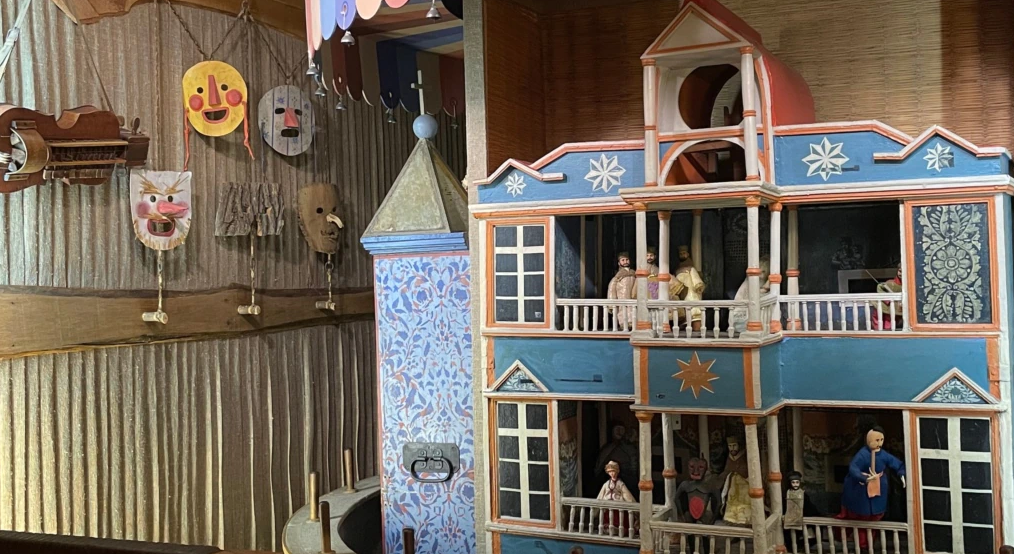
The manuscript of the Sokyrynskyi vertep, including an outline of plot features and the composition of several carols, does not identify which instrument or choral voice should perform at any time, explains harpsichordist Liubov Titarenko,
“This is a completely baroque tradition. Usually, the authors wrote out only the number of voices in both the vocal and instrumental sections, and the performers selected specific voices and instruments based on the range of parts and the nature of the music.”
Presenting the reconstructed vertep to Ukrainian dissidents 50 years after they were arrested for caroling in the USSR
January 2022, a month before the Russian full-scale invasion, marked the 50th anniversary of the tragic 1972 vertep. Then, on 12 January, 19 people – among them leading Ukrainian dissidents – were arrested in Lviv and Kyiv by Soviet authorities for caroling. The vertep in itself was an act of fearless defiance in the USSR, where both religion and Ukrainian national traditions were outlawed and persecuted.
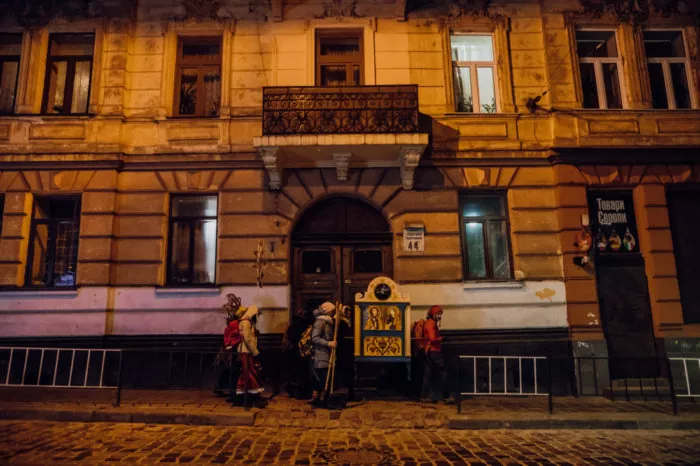
Students of the UCU decided to visit former dissidents with a reconstructed Sokyrynskyi vertep on Christmas, exactly 50 years after 1972, when they were incarcerated. In 1972, these people — who today are professors and pensioners — were themselves young at that time, singing the same carols and conducting their vertep under the totalitarian communist regime. For engaging in this simple Ukrainian Christmas tradition, they paid with terms of imprisonment.
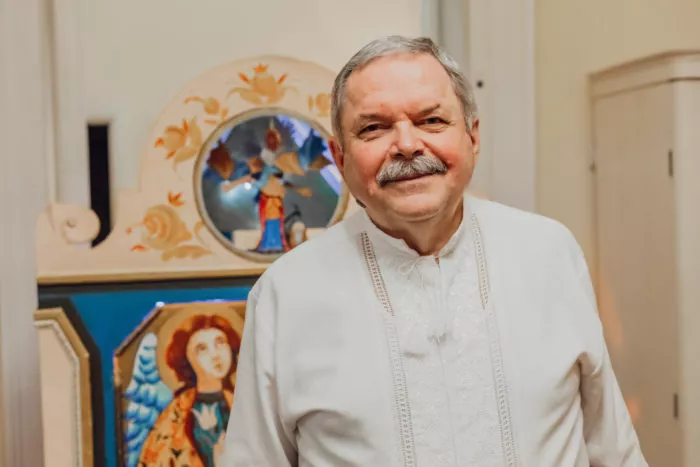
“The first time we organized [vertep], the [Soviet] police arrested Mykola Matishevych, our leader, for 15 days in order to prevent our group from performing vertep. They provoked him, allegedly a fight, and imprisoned him. We went to the vertep scene on 31 December. It was unthinkable to go on Christmas. Even on 31 December, we disguised ourselves. Mykola was arrested, but we went anyway. And we were going [with vertep],” Myroslav Marynovych, now 76, recalls his experience of vertep in 1976, during the USSR.
He also comments on the feelings when people could not sing carols and perform verteps:
“And even some of those trusted families, to whom we went, we saw how they were sitting at the table, and we sang carols to them, and they looked at us with such fear, with such fear, because the loud carol, and there were the neighbors. You know, like my father when he was going to lead the holy mass somewhere secretly, he was asking: “Do you need the Liturgy sung, or spoken, or whispered?” Because the neighbors were different and could inform [authorities].”
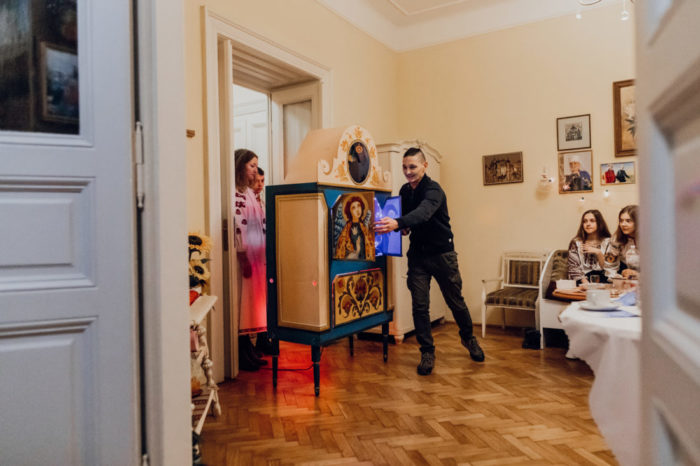
On 12 January 2022, the UCU theater performed the vertep at the university, intentionally on the same day that the event dedicated to the 1972 Soviet dissident was held. Introductory remarks were provided by Ukrainian poet and dissident Ihor Kalynets
.
The vertep performance: Putin’s fate compared to Herod’s
Despite the ongoing war, the UCU theater performed the Sokyrynskyi vertep again on 25 December 2022, this time as part of wider Christmas celebrations at the university. Not only did university students attend the event, but many additional participants who were invited through social media were present.
The play tells the story of three kings coming to visit baby Jesus, while King Herod interrogates them demanding to know his birthplace — with the obvious intent to kill the baby. However, the angel tells the kings not to disclose the location, and the cruel governor fails.
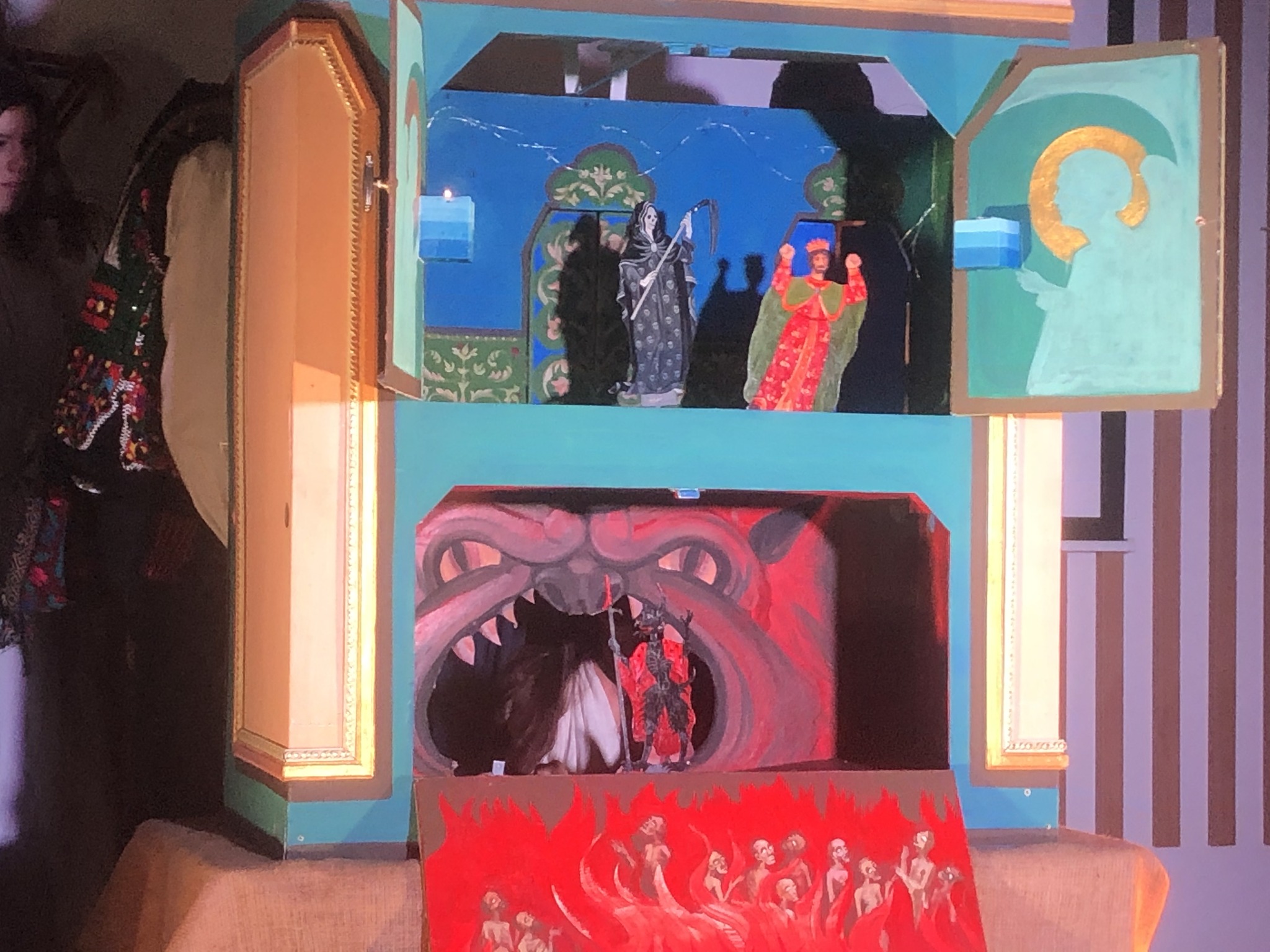
The final scene is the dialogue between Death and Herod. Herod boasts that he is almighty and death can do nothing to him. Death replies that power is powerless in the face of Death, and Herod tumbles down to the bottom level of the vertep house – hell.
Voicing Herod, in this rendition the actor used certain Russian expressions, thus alluding to Putin and comparing him to Herod. The implication is that the fate of Herod is also Putin’s fate.
Banned Ukrainian carols are reconstructed and sung
Not only was the Ukrainian vertep prohibited during the Russia-led Soviet Union -- carol singing was, t00. Another UCU project, Eteria choir, performs old songs and especially carols. Most of them would be forgotten if not for the painstaking work of enthusiasts who recorded them in the villages back in the 19th and 20th centuries.
Many of the ancient texts and melodies bear old motives with references to the birth of the world, sun, or spring, intertwined with later Christian tradition. They were collected in different Ukrainian regions.
The last one, “When the Tree Stood There” was recorded in Kuban which is contemporary Krasnodar krai in Russia. Before the 1932 Holodomor genocide more than 50% of the local population in Kuban was Ukrainian. After Holodomor, the region was gradually Russified and today any traces of Ukrainian culture can hardly be noticed there.
Wintertime, wintertime / В зимі, в зимі (Listen)
During wintertime, during Christmas time
O generous Lord!
Wandering were rifleman, seven hundred men,
O generous Lord!
Wandering they came to a kind landlord
O generous Lord!
Who paid his servants 100 red coins
O generous Lord!
100 red coins and a horse saddled
O generous Lord!
A horse saddled, full in silver
O generous Lord!
Golden horseshoes are smashing the stones
O generous Lord!
[They] Are smashing the stones and building churches
O generous Lord!
Are building churches with three domes each
O generous Lord!
With three domes and three windows
O generous Lord!
The first window – the sun rises
O generous Lord!
The second window – the noon sun shines
O generous Lord!
The third window – the sun goes down
O generous Lord!
We came to you kind man, mister Ivan
O generous Lord!
Wishing happiness and good health for you
O generous Lord!
Happiness and health for many years
O generous Lord!
As It was in Ancient Times / Із Прежде віка (Listen)
As it was in ancient times
Refrain: O generous Lord!
When neither sky nor earth existed
When only was blue sea
Fires were burning on that sea
Saints were sitting near those fires
Holding a council on who would be sent to sea:
“Go, Petro, to the bottom of the sea
And bring up the yellow sand,
And we will sow it throughout the world,
So that sky and earth be born.”
Sky with stars, earth with flowers
O generous Lord!
When the Tree Stood There / Як стояло древо (Listen)
When the tree stood there, thin and tall
Refrain: Generous Eve, good evening!
Thin and tall, wide with leaves
And young Vasylko stood underneath
Drawing arrows to his bow, targeting an eagle
“Oh, don’t shoot at me, young Vasylko, [the eagle said]
You’re gonna need me soon to help!
When you will get married,
I’ll flap my wings and disperse the clouds!”
Generous Eve, bountiful evening!
Read more:
- The wonderful world of Christmas as seen through the eyes of Ukrainian artists
- Head of Ukraine’s Church holds Christmas service at historic monastery long linked to Russia
- Historical churches of the Kyiv-Pechersk Lavra returned to Ukrainian state from Russia-affiliated church
- A Ukrainian Christmas music playlist from Euromaidan Press
- Polyphony Project: discovering the largest online archive of traditional Ukrainian songs
- Swedish conductor: Ukraine fights to be a free country with free art, not Russia

